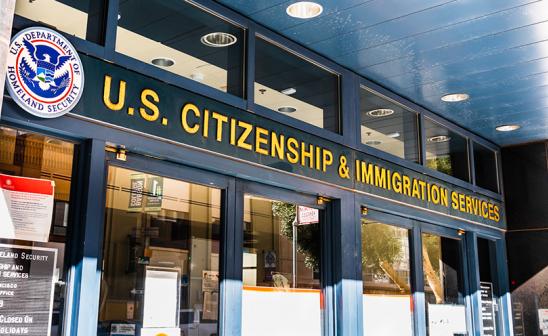Whites’ diverse perceptions of immigrants shape their immigration policy preferences

A new study finds that existing survey questions on “immigrants” obfuscate heterogeneity in perceptions
By Sarah Steimer
Countless scholarly studies across the social sciences have examined Americans’ attitudes toward immigration. But a study published in the journal Social Forces finds that existing survey questions on immigrants obscures the diversity in white Americans’ perceptions of what an immigrant is, and how this shapes their policy preferences.
“Understanding how natives react to immigrants is crucial because they form the social context that immigrants encounter when they move to host societies,” says René D. Flores, a Neubauer Family Assistant Professor in the Department of Sociology. “And also because natives can influence, through their political participation, the kinds of policies that are put in place to receive immigrants.”
But the typical questions that scholars use to measure immigration attitudes are ambiguous. For example, Gallup pollsters have asked, since 1965, “Thinking now about immigrants — that is, people who come from other countries to live here in the United States, in your view, should immigration be kept at its present level, increased or decreased?”
Nevertheless, as Flores explains, there’s significant diversity in the immigrant population, from legal statuses to national origins to gender. So, when individuals respond to these survey questions, it is not clear what immigrants they have in mind. Further, these mental images may shape whether they think immigration flows should increase or decrease.
Flores and his co-author Ariel Azar, a sociology doctoral candidate, explore this gap in knowledge in a newly published article in Social Forces. First, they designed an open-ended survey in which they asked native, non-Hispanic white people: When you think of immigrants, who comes to your mind? Can you describe their traits?
What they found was that very few people mentioned some of the immigrant traits that have been discussed by social scientists in the literature, such as religion or welfare use. The traits that survey respondents did commonly list included gender, age, national origin, legal status, and reason for coming to the U.S.
The researchers designed a second study that asked a nationally representative sample of non-Hispanic whites about the traits they uncovered in the first survey. Using Latent Class Analysis, they found that the immigrant traits the respondents mentioned are correlated in specific ways forming different constellations of characteristics they call “immigrant archetypes.” They found five different archetypes.
About 38% of whites believe most immigrants resemble an undocumented Latino male: he comes from Latin America, has little education, low-income, and is not legal. These individuals express the most restrictionist immigration policy preferences.
In contrast, 17% of whites believe most immigrants are better educated, have higher incomes and higher status jobs, and that immigrants may come from Asia or Europe (not Latin America). These individuals express the most pro-immigrant policy preferences.
However, there's a second Latino archetype. 15% of whites believe most immigrants resemble a Latina woman who has a family and a low status job, but is better educated than her Latino male counterpart and is documented. These individuals express more positive immigration attitudes.
“It turns out that these perceptions of immigrants are some of the strongest predictors of people's immigration attitudes,” Flores says. “Most other variables that have been considered in this literature, such as individuals’ education, class background, and job status, are not as strong a predictor of their views about immigration public policy.”
The existence of these archetypes implies that politicians, journalists, or researchers may only need to mention one specific trait to invoke an entire archetype. They may only need to say “tech workers” or “nurses” to conjure up the high-status worker archetype. Or they might say “gardener” or “poor immigrants” or “Latin Americans” to conjure up the idea of the undocumented Latino male.
The authors believe that in every society there are multiple immigrant archetypes that stand in for entire segments of the immigrant population, such as the Mexican gardener or the Asian tech worker in the U.S., or the Polish plumber in the U.K.
Flores underscores that many of people’s perceptions are not based on objective truth. For example, 53% and 58% of their respondents believe that Mexicans and Central Americans, respectively, make up most immigrants in the U.S. The reality is that Mexicans make up 25% and Central Americans 8% of the immigrant population. “There's definitely a disconnect here between perception and reality,” Flores says. “We need to understand why this gap exists and how to close it.”
 THE UNIVERSITY OF CHICAGO
THE UNIVERSITY OF CHICAGO


